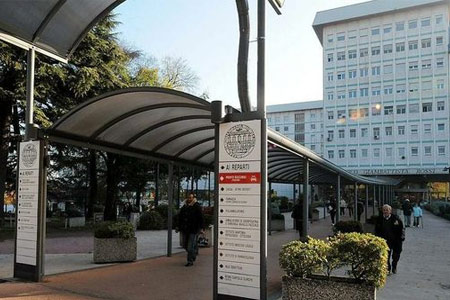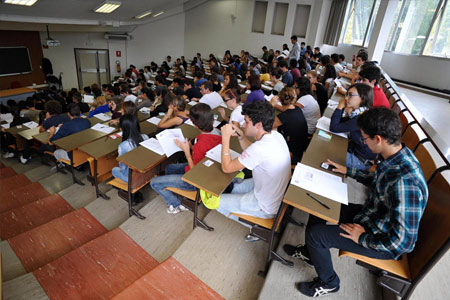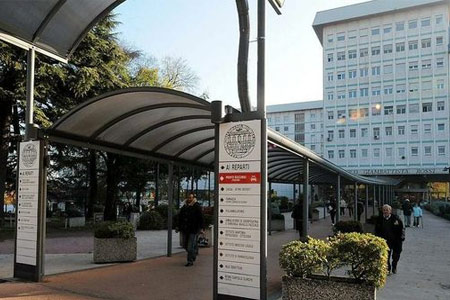- Authors:
-
Steccanella, Federica
- Title:
-
The relevance of L-type calcium channel gating properties to cardiac arrhythmia and differential modulation of L-type CaV channels by the α2δ-1 auxiliary subunit
- Year:
-
2019
- Type of item:
-
Doctoral Thesis
- Language:
-
Inglese
- Keyword:
-
L-type calcium channels; Late L-type calcium current; Early Afterdepolarization; Anti-arrhythmic strategy; Alpha-2-delta subunit; Voltage sensing domain
- Abstract (italian):
- L-type voltage-dependent calcium (Ca2+) channels (CaV1.2) initiate cardiac excitation-contraction coupling producing a rapid Ca2+ current (peak ICa,L) that triggers Ca2+ release from the intracellular stores, and a persistent current (late ICa,L) that flows towards the end of the action potential (AP). Peak and late ICa,L shape the plateau phase of the AP, counterbalancing potassium currents. An exaggerated activation of the late ICa,L during AP repolarization can cause transient membrane potential depolarizations called Early Afterdepolarizations (EADs), that can trigger lethal arrhythmias. Therefore, CaV1.2 channels represent a highly promising therapeutic target to abolish EADs. Current anti-arrhythmic drugs that operate on CaV channels (Class IV antiarrhythmics) reduce peak ICa,L, causing a negative inotropic effect. Based on the discovery that a small reduction of the late ICa,L can potently suppress EAD occurrence, we hypothesized that drugs selectively targeting this late component should efficiently suppress EADs preserving contractility. To test this hypothesis, we used roscovitine, a purine analog that reduces the late (non-inactivating) ICa,L over “peak”, accelerating the voltage-dependent inactivation of CaV1.2 channels. We proved that decrease of late ICa,L by roscovitine, verified both in native and cloned CaV1.2 channels, abolished EADs in rabbit ventricular myocytes preserving contraction efficiency. Moreover, this reduction suppressed and prevented EAD-mediated ventricular fibrillation in rabbit and rat hearts. In both isolated myocyte and heart experiments, the effect was independent from the mechanism chosen to induce EADs (hypokalemia and/or oxidative stress). These results suggest that 1) limiting anomalous Ca2+ channels action during the plateau phase is an effective and safe antiarrhythmic strategy and that 2) roscovitine can be considered as a potential pilot compound for a new class of antiarrhythmics that likely would not compromise heart contractility. Cav1.2 channels derive their voltage dependence properties from the structural asset of the α1 pore-forming subunit which comprises 4 positively charged modules, called voltage-sensing domains (VSD I-IV), that undergo a conformational change upon membrane depolarization, opening the channel. The voltage-dependent properties of these four VSDs are modulated by several auxiliary subunits (such as α2δ and β) interacting with the α1 subunit. Specifically, α2δ subunit, by remodelling the voltage-dependent properties of 3 out of 4 cardiac VSDs, allows CaV1.2 channels to operate at physiological membrane potentials producing the typical fast-activating current. Interestingly, the same auxiliary subunit produces opposite effects on the close relative CaV1.1 channels which regulate the excitation-contraction coupling in the skeletal muscle. Here, the α2δ subunit slows down CaV1.1 activation kinetics and leaves almost unperturbed the voltage-dependent activation of the pore. The molecular mechanism by which the α2δ subunit differently modulates CaV1.1 channels compared to CaV1.2 isoform is still unknown. To gain a mechanistic insight, we expressed in Xenopus oocytes CaV1.1 channels (α1S and the auxiliary subunit β1a) with or without α2δ. Using the voltage clamp fluorometry technique, we tracked the voltage-dependent conformational rearrangement of each VSD in conducting channels to derive pore and VSD voltage-dependent relationships. Analogously to CaV1.2, each CaV1.1 VSD had unique biophysical properties that might reveal different functional roles. The presence of α2δ remodelled only VSD I voltage-dependent properties, shifting its activation ~ 20 mV to more negative membrane potentials, may accounting for the ~ 10 mV-hyperpolarizing shift of pore opening observed with the accessory subunit. As opposite to CaV1.2, α2δ slowed down CaV1.1 activation kinetics and accelerated the rate of channel closure, contribut
- Product ID:
-
109684
- Handle IRIS:
-
11562/998380
- Last Modified:
-
November 3, 2022
- Bibliographic citation:
-
Steccanella, Federica,
The relevance of L-type calcium channel gating properties to cardiac arrhythmia and differential modulation of L-type CaV channels by the α2δ-1 auxiliary subunit
Consulta la scheda completa presente nel
repository istituzionale della Ricerca di Ateneo 








